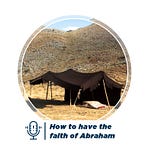(Welcome to the second edition of The Payneful Truth. Feel free to forward this email to your friends or use the ‘share’ button at the end to spread the word.)
It’s early March (as I write this) and all across this burning, flooded, toilet-paper deprived land, churches are launching their small Bible groups for the year—or ‘missional disciple-making gospel community growth teams’ as I am suggesting we call ours, just to cover all bases.
It’s a time to reconnect with members from last year, make newbies feel welcome, and get back into the rhythm.
But the rhythm of what exactly? What are these MDMGCGTs that are now such a fixture of church life?
In practice, there is wide range of answers to this question—all the way from ‘a relaxed care-share-and-prayer evening with light touch facilitation’ at one end, through to ‘a full-on church in miniature with responsible pastoral leadership’ at the other. And obviously enough, where you land on that spectrum will have serious implications not only for group expectations and norms, but for what sort of leader is trained and appointed, and what kind of activities the group focuses on.
I suspect that not many Payneful Truth readers are at the extreme ends of that spectrum. Not many of us want our small groups just to be loosely organized friendly Christian catch-ups. But I also doubt that many of us think that our small groups are a viable replacement for ‘church’ (in the sense of a local congregation). Good small groups share some of the qualities and nature of ‘church’—they are opportunities for Christians to gather around the word of Christ together, in the fellowship of the Spirit. But we also sense that they are not equivalent; that the community that is defined and constituted by the larger Sunday gathering (the local ‘church’) is a different thing in key ways from the small Wednesday night gathering (the ‘small group’).
But different how exactly?
There are various ways to answer that question, but the PhD research I’ve been doing over the past few years (now blessedly completed!) has pointed me towards a fresh approach. And it has to do with how Christians grow through the word.
Broadly speaking (and I mean as broad as Bob Katter’s hat), in the New Testament the ministry of the word within Christian communities operates in two overlapping zones. In one zone, the Christian mind of the whole congregation is formed, developed and guarded through the faithful, consistent teaching of the Christ-centred truth of the Scriptures by qualified, recognized pastor-teachers (e.g. 1 Tim 5:17; Tit 1:5-9; Heb 13:7). In our churches today, this routinely happens through faithful, expositional Sunday-by-Sunday preaching. Let’s label this kind of word ministry ‘congregational teaching-and-preaching’.
But there is another zone of Christian word ministry in the NT—one that is the responsibility of all Christians (not just pastor-teachers or elders). This form of speech focuses on exhorting, encouraging, instructing and admonishing one another to make the preached word a reality in our daily lives (e.g. Col 3:16; Heb 3:12-13; 1 Thes 5:11, 14). Let’s call this ‘one-another edifying speech’.
These two kinds of speech are both vital for Christian growth and maturity. And they do overlap. ‘Congregational teaching-and-preaching’ does contain exhortation, admonition and encouragement—applied to the congregation as a whole. And ‘one-another edifying speech’ does contain, and is based upon, the true teaching of the Scriptures. But the focus and function of the two ‘zones’ of word ministry are different.
'Congregational teaching-and-preaching’ expounds, explains and guards the whole truth of the gospel, and shows its application to all of life; ‘one-another edifying speech’ takes that truth, and brings it to the particular contexts of individual people and situations. The former trains my heart to approach every circumstance with the mind of Christ; the latter meets me in that circumstance and provides the help and encouragement I need to express that mind of Christ in godly action.
To put it simply, ‘congregational teaching-and-preaching’ is the zone of word ministry at the centre of our Sunday church gatherings; small groups provide an ideal opportunity for the other vital kind of word ministry to come to the fore and flourish—the ‘one-another edifying speech’ in which we help one another as individuals to understand, remember and apply the word to the granular complexity of our lives.
Thinking about small groups through this lens helps to calibrate our expectations for what small groups should achieve, and what role small group leaders play in that.
It pushes us away from the loosy-goosy end of the spectrum, because the subject of our mutual sharing and exhortation is not ourselves and our problems but the word of Christ, which is supposed to dwell richly among us as we speak to each other in all manner of ways. This in turn means that small group leaders need to understand this priority, and be trained in how to lead their group into the word, and to keep them there as long as possible—so that our personal, practical, exhortatory conversation is word-shaped rather than us-shaped.
But it also warns us against the more rigorist end of the spectrum, in which the discussion is more like an interactive sermon, and the leader is expected to deliver a ‘teaching’ of the kind that the pastors and elders are responsible for. It’s not as if some Bible study leaders aren’t gifted enough to do this—mature, well-trained Christian leaders often are. But this approach not only crowds out the opportunity for the other kind of vital Christian word ministry—the one-another kind—it also places burdens and expectations on small group leadership that the majority of leaders (and churches) really struggle to meet.
There is much more to say on all this—not only on the nature of small group ministry, but about the commonalities and differences between pastoral teaching-and-preaching and the one-another word ministry of Christian believers (and I will return to these matters in future editions).
But lest this short column itself turn into a sermon, rather than a brief shot of instruction and encouragement, I’ll stop.
PS. Thanks for all the messages of encouragement after the first edition last week, and thanks also to those who pointed out that the photo of the Nissan Cedric failed to show up. My fault entirely (still learning the ropes on this new platform). This week’s random photo has to be … Bob Katter’s hat. (For overseas readers, Bob Katter is a colourful Australian politician.)
PPS. Speaking of hats, one of my other hats is helping to organise the Nexus Conference each year. It’s now only two weeks away (on March 23). Check out the Nexus Conference website for why this one-day ministry conference is well worth your time (whether coming in person in Sydney, or via Livestream).














Small groups and ‘church’: what’s the difference?